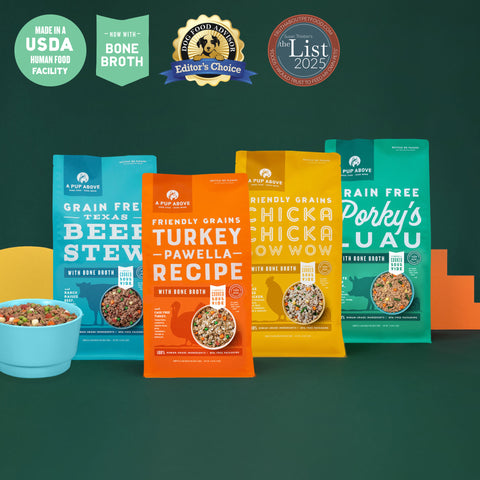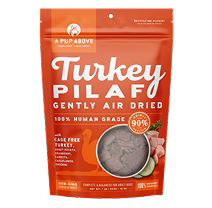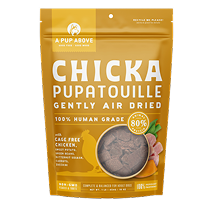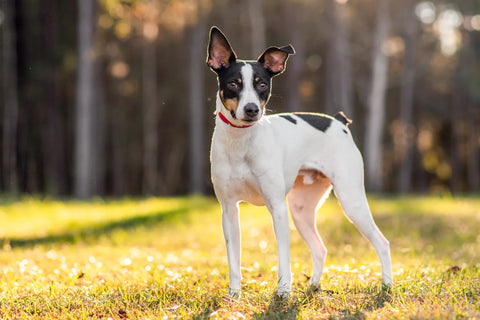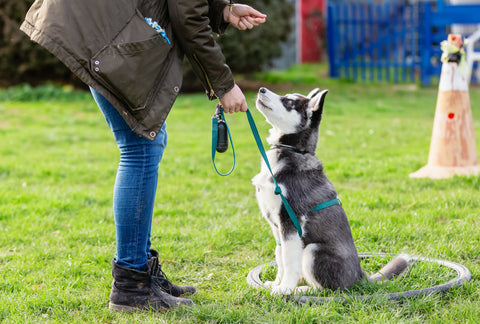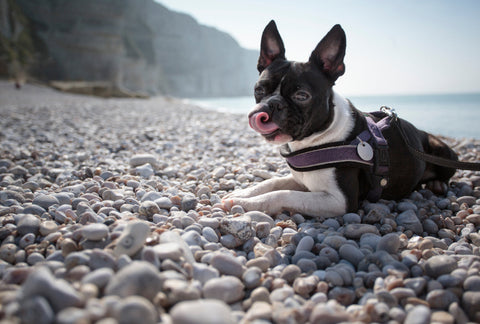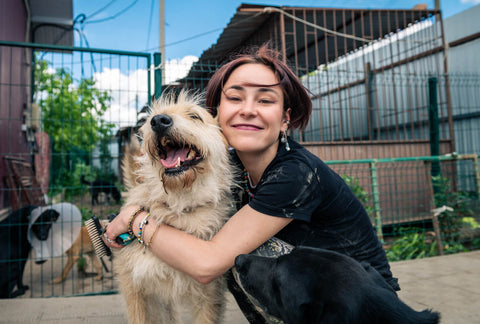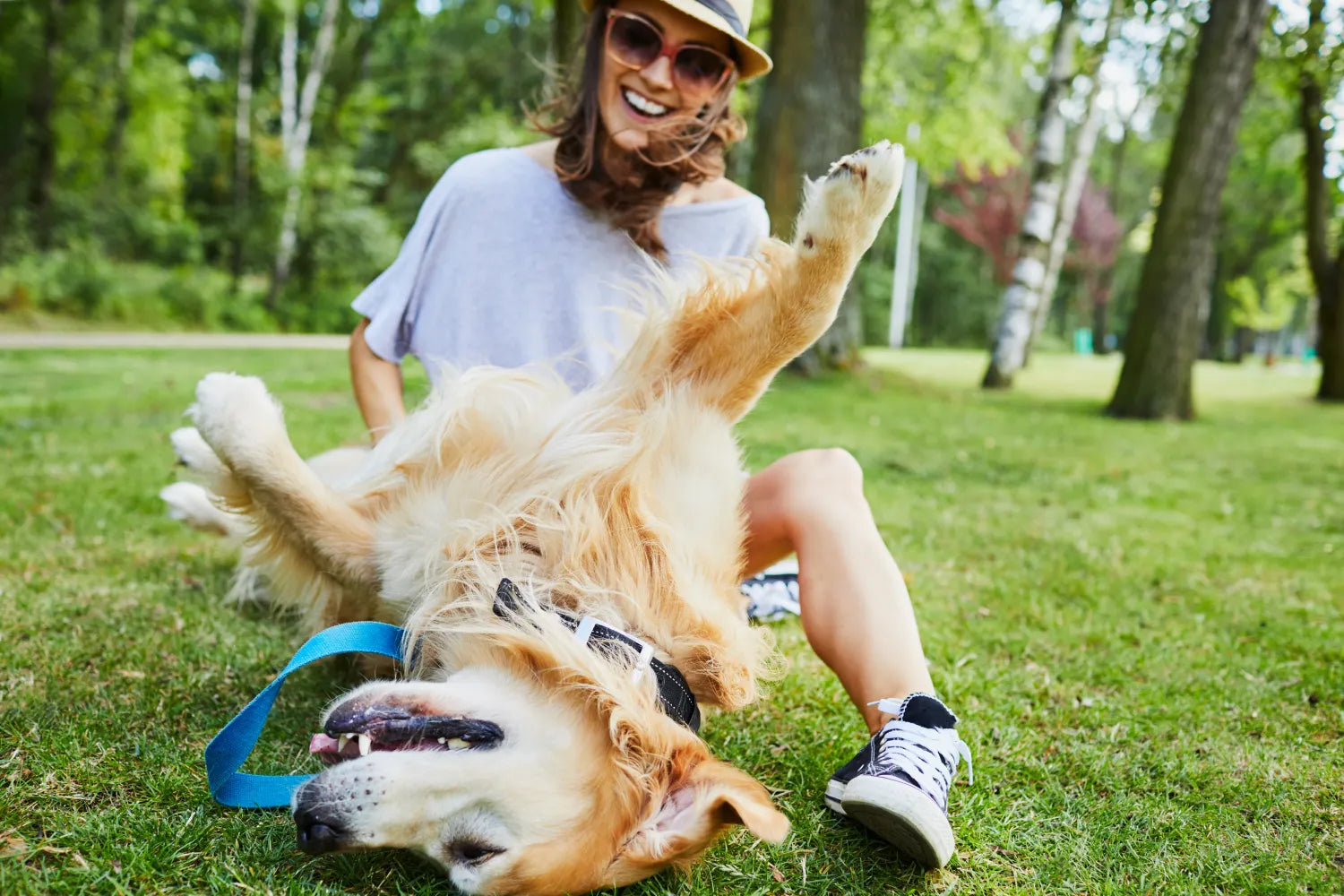
Are Dogs Ticklish? Uncovering the Mystery of Canine Ticklish Spots
Have you ever noticed your dog twitch or thump their leg when you hit just the right spot during a belly rub? It's a question that tickles every dog lover's mind: Are dogs ticklish?
Here at A Pup Above, we're all about discovering the quirky and wonderful traits of our canine companions. So, grab your pup, give them a gentle scratch, and let's explore this amusing and intriguing topic.
We're going to dive into the world of doggy giggles and wiggles, looking at where our furry friends might be most sensitive and what their adorable reactions can tell us about them.
Can Dogs Be Ticklish?
Ticklishness in dogs is about understanding how they feel and react to different types of touches. Dogs might not burst into laughter like humans, but they sure have their special way of showing they're enjoying a good scratch. It could be a leg kick, a body wriggle, or even a look of pure bliss.
This reaction is more than just physical — it's a sign of their trust and comfort with you. While humans giggle and squirm, dogs show their ticklishness in their own unique, tail-wagging ways.
So, what we're seeing is a mix of reflex and pleasure — a little insight into their happy world.
Where Should I Scratch My Dog?
Every dog owner has their pet's favorite spot figured out, but let's look at some common ticklish areas in dogs:
- The Belly: It's no secret most dogs love a good belly rub. This area is often a ticklish zone, where gentle scratches can lead to those funny leg kicks.
- Between the Paws: Some dogs love having the spaces between their paws touched, leading to playful nibbles or paw shakes.
- Behind the Ears: This is like a massage for dogs, often making them lean into your hand with a content sigh.
- Along the Back: A good back scratch, especially near the base of the tail, can get some dogs wiggling in delight.
Keep in mind that every dog is an individual with their own likes and dislikes. Some might love a good ear rub, while others prefer a gentle back pat. It's all about getting to know your dog's preferences and enjoying those moments of bonding and ticklish fun.
How Do I Know If My Dog Is Ticklish?
When it comes to ticklish sensations, our canine pals have their own special ways of letting us know how they feel. This usually includes a whole array of reactions that speak volumes.
A gentle scratch might earn you a contented sigh, a soft whine, or even a playful nibble. Some dogs will roll over in delight, inviting more belly rubs, while others might squirm a bit if it gets too intense.
Understanding these reactions is crucial. A happy wag or a relaxed posture means you're on the right track, but it's a clear signal to stop if your pup moves away or seems uncomfortable. It's their way of setting boundaries.
These responses are more than cute quirks; they're a window into your dog's comfort and happiness. Paying attention to these cues helps strengthen the bond between you and your furry friend, ensuring a happy and respectful relationship.
Can Dogs Laugh?
So, what's the deal with dogs and ticklish spots? Turns out that it's a mix of brainy stuff and body responses.
Research suggests that when dogs kick or wiggle in response to certain touches, it might be due to a reflex designed to protect them from irritants — like bugs on their skin. But when it comes to those enjoyable belly rubs, it's more than just a reflex. It's about feeling good!
The dog's brain, particularly the region responsible for pleasure and bonding, lights up during these moments of affection. It's similar to the joy humans feel when someone tickles their funny bone, but in a doggy-style way. MRI scans have shown increased activity in parts of the canine brain associated with positive emotions during petting and cuddling sessions.
Understanding the science behind these ticklish reactions gives us a deeper appreciation of our dogs' responses to affection. It's not just a physical thing — it's an emotional connection, a shared moment of joy and closeness that strengthens the bond between dogs and their humans.
The Art of the Belly Rub
Let's face it: perfecting the art of the tickle is crucial in the doggy world. It's about hitting those joy spots just right and understanding your dog's ticklish boundaries.
Here's how you can master the dog tickle to ensure they enjoy it every time:
- Find the Sweet Spots: Every dog has their favorite ticklish areas. Common spots include under the chin, behind the ears, or along the back. Experiment gently and note where your dog seems most content.
- Vary the Techniques: Some dogs love a light scratch, while others prefer a gentle rub. Changing up your technique can turn a simple petting session into a delightful game of guess-what-feels-best.
- Respect Their Limits: Just like people, dogs have their boundaries. If they show signs of discomfort or annoyance, it's time to stop. Respecting these limits is key to maintaining trust and a happy relationship.
- Bond Over Mealtime: Incorporate bonding time with mealtime by offering them a nutritious meal after a playful tickle session. At A Pup Above, we recommend our freshly cooked, human-grade meals, like Turkey Pawella or Porky’s Luau, as a healthy and delicious way to show love. It's not just about satisfying their hunger; it's about nourishing the bond you share.
How Do I Know If My Dog Doesn’t Like Tickles?
While many dogs revel in a good scratch, it's essential to recognize when they're not in the mood for tickling. Every dog communicates differently, and as responsible pet owners, understanding their non-verbal cues is vital.
Here are some signs that your dog might not be enjoying the tickle session:
- Moving Away: If your dog moves away from your touch, it's a clear sign they're not enjoying the interaction. Respect their space and don't pursue further tickling.
- Avoidance Behaviors: Look for signs like turning their head away, avoiding eye contact, or flattening their ears. These are indications that your dog is uncomfortable with the tickling.
- Stiff Body Language: A dog that's stiffening up or showing tension in their body is likely not enjoying the experience. It's best to stop and give them some space.
- Vocalizations: Growling, whining, or other vocalizations can signal discomfort or anxiety. Pay attention to these sounds, as they're your dog's way of communicating their feelings.
- Lip Licking or Yawning:These subtle signs can indicate stress or nervousness in dogs. If you notice these behaviors, it's time to pause and reassess your approach.
A Final Word
As we wrap up this joyful exploration into the ticklish world of dogs, it's clear that these playful interactions are more than just fun. They are a testament to the deep, trusting bond we share with our canine friends.
Understanding our dogs' ticklish responses, respecting their preferences, and knowing when to pause are key to nurturing a relationship filled with respect and love. At A Pup Above, we believe every pat, scratch, and belly rub strengthens the unique connection between dogs and their owners.
These moments of shared happiness, laughter, and understanding make our journey with our furry companions so fulfilling. So next time you're sharing a ticklish moment with your dog, remember, it's these simple joys that make life with our four-legged friends so wonderfully special.
Sources:
Are Dogs Ticklish? | American Kennel Club | AKC
Understanding dog cognition by functional magnetic resonance imaging | PMC
Why Do Dogs Wag Their Tails? | American Kennel Club
What Is the Meaning of Lip Licking or Air Licking in Dogs? | Psychology Today
Top Stories

Why Do Dogs Lick Their Paws?

Why Do Dogs Whimper & Make Noises in Their Sleep?
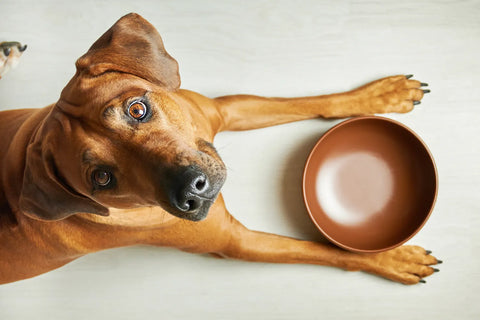
Healthy Vet-Approved Homemade Dog Food Recipes

How To Cook Sweet Potatoes for Dogs
